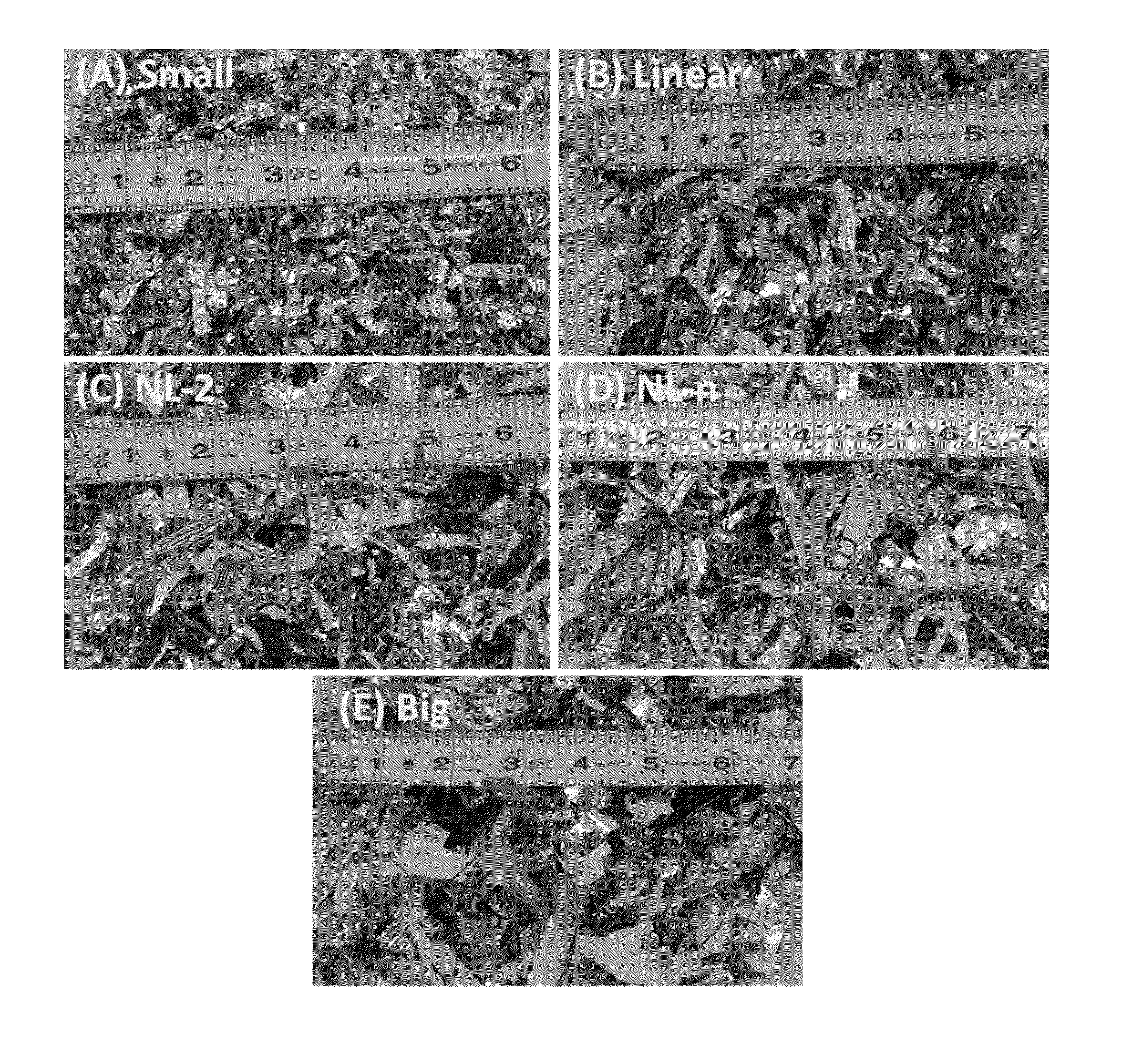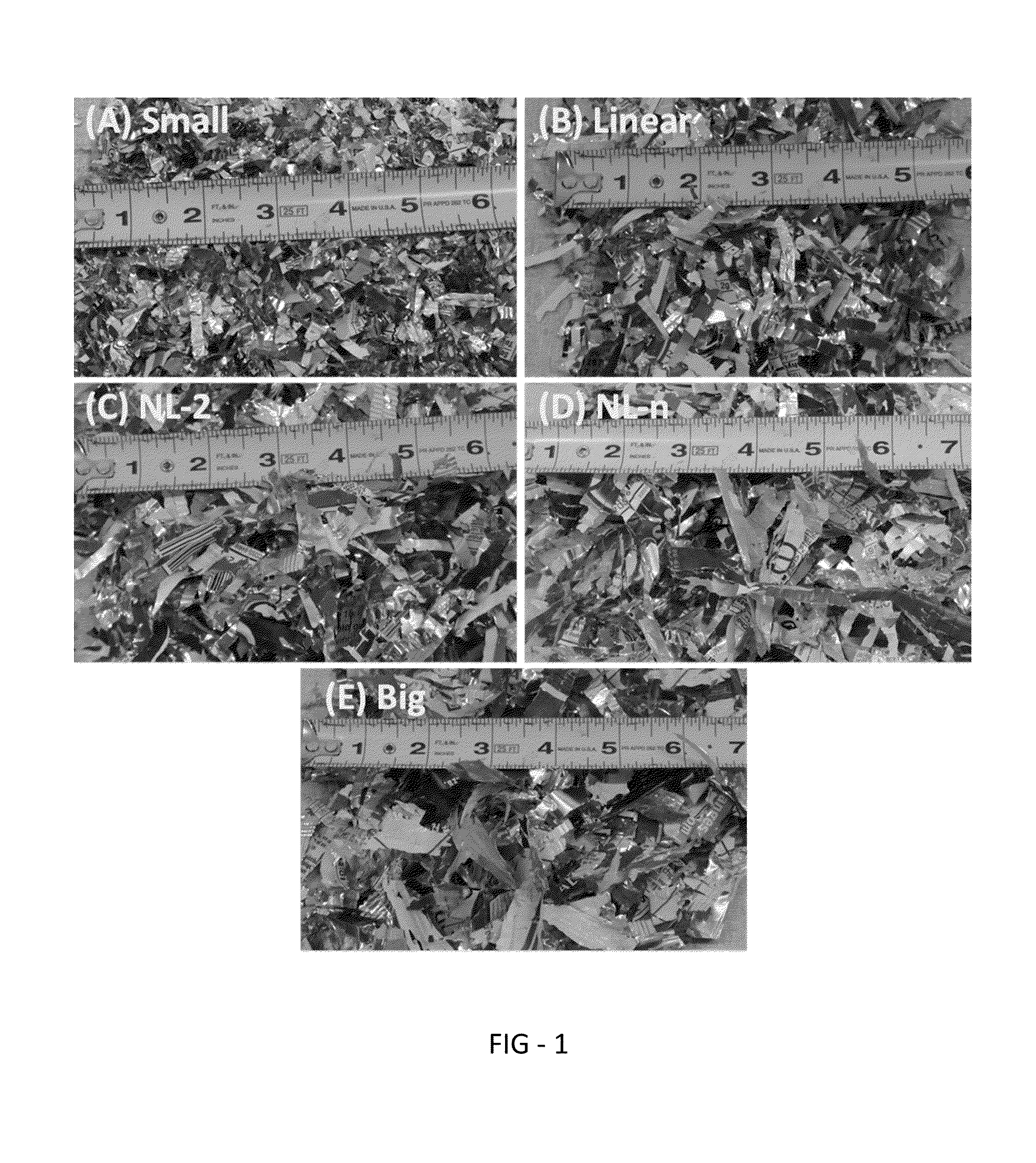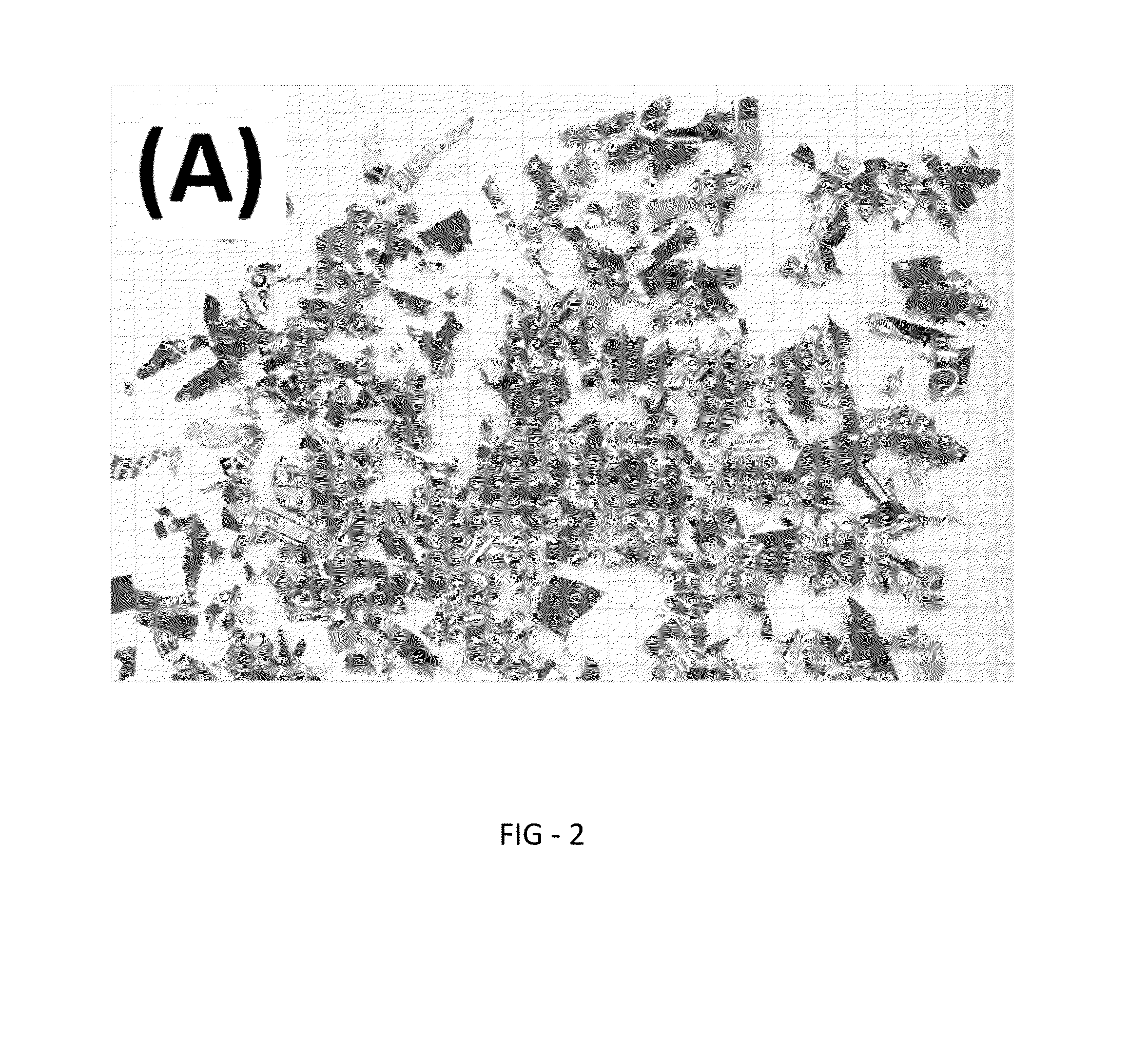Thermal Insulation with Entangled Particulate Units having Non-Integer Dimensionality
a technology of entangled particulate units and thermal insulation, applied in the direction of heat insulation, yarn, transportation and packaging, etc., can solve the problems of poor thermal insulation material, poor overall thermal insulation, and high radiation heat transfer, so as to inhibit radiative heat loss, reduce heat loss, and reduce heat loss
- Summary
- Abstract
- Description
- Claims
- Application Information
AI Technical Summary
Benefits of technology
Problems solved by technology
Method used
Image
Examples
Embodiment Construction
[0041]Although this invention will be described in terms of certain preferred embodiments, other embodiments that are apparent to those of ordinary skill in the art, including embodiments that do not provide all of the benefits and features set forth herein and including embodiments that provide positive benefits for high-volume manufacturing, are also within the scope of this invention. Accordingly, the scope of the invention is defined only by reference to the appended claims.
[0042]The instant insulation material is an aggregate of particulate units. As described more fully hereinbelow, the particulate units are dimensionally engineered to achieve a geometric configuration that restores loft when the insulation material is compressed or crushed. The geometric configuration may have non-integer dimensionality and may exhibit a high degree of self-similarity. The geometric configuration and / or material of construction of the particulate units may also facilitate scattering of therma...
PUM
| Property | Measurement | Unit |
|---|---|---|
| length | aaaaa | aaaaa |
| length | aaaaa | aaaaa |
| length | aaaaa | aaaaa |
Abstract
Description
Claims
Application Information
 Login to View More
Login to View More - R&D
- Intellectual Property
- Life Sciences
- Materials
- Tech Scout
- Unparalleled Data Quality
- Higher Quality Content
- 60% Fewer Hallucinations
Browse by: Latest US Patents, China's latest patents, Technical Efficacy Thesaurus, Application Domain, Technology Topic, Popular Technical Reports.
© 2025 PatSnap. All rights reserved.Legal|Privacy policy|Modern Slavery Act Transparency Statement|Sitemap|About US| Contact US: help@patsnap.com



